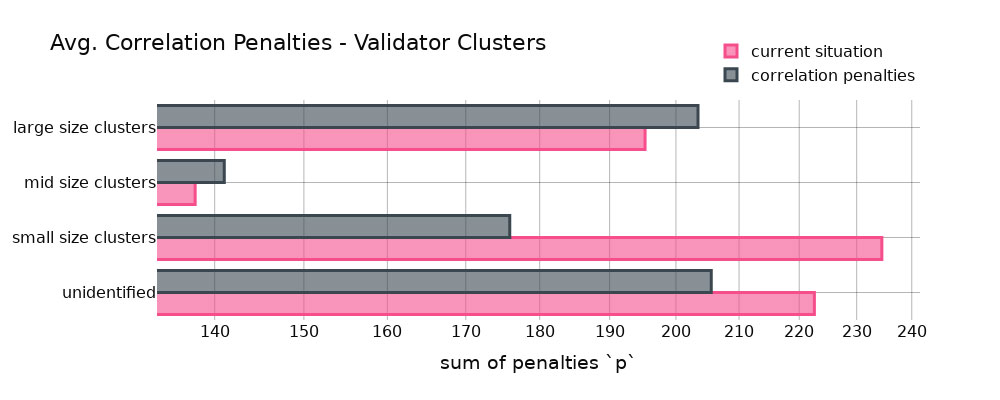[ad_1]
The idea of anti-correlation penalties, as described by Wahrstätter, is carefully linked to the thought of countering the benefits of economies of scale.
Ethereum’s quest for decentralization has been a central theme in its evolution, with Vitalik Buterin, the platform’s creator, regularly searching for progressive strategies to reinforce its decentralized nature. One such proposal gaining traction is the idea of anti-correlation penalties, which goals to counteract the centralizing forces of economies of scale inside Ethereum’s staking ecosystem.
In a bid to reinforce the decentralization of Ethereum’s staking ecosystem, Ethereum researcher Toni Wahrstätter has proposed the implementation of anti-correlation penalties. In keeping with Wahrstätter, these penalties purpose to counteract the benefits of economies of scale, which at the moment incentivize centralization amongst stakers.
Wonderful work by Toni Wahrstätter, replicating and increasing on my evaluation final month on cross-validator correlations and adjusting validator incentives to favor decentralization:https://t.co/p6a0JD0DMg pic.twitter.com/OPv2UcZGF3
— vitalik.eth (@VitalikButerin) April 9, 2024
The proposal, detailed in a current evaluation, highlights the potential impression of anti-correlation penalties on staking operators and consumer implementations, shedding gentle on their function in selling a extra decentralized community.
Economies of Scale and Ethereum Centralization
Presently, stakers profit from economies of scale, which supply benefits resembling enhanced community connectivity, superior {hardware} reliability, and professional infrastructure administration. Nevertheless, these benefits typically result in centralization, as bigger staking operators can leverage their assets to dominate the community.
To handle this, mechanisms that counteract the benefits of economies of scale are important for strengthening decentralization.
Understanding Anti-Correlation Penalties
The idea of anti-correlation penalties, as described by Wahrstätter, is carefully linked to the thought of countering the benefits of economies of scale. When a single operator runs a number of validators on one machine and experiences downtime, all validators are affected concurrently.
This phenomenon leads to correlated dangers, the place the failure of 1 validator can result in the failure of others operated by the identical entity. Anti-correlation penalties purpose to punish those that leverage economies of scale by introducing penalties for correlated dangers.
The proposal suggests implementing anti-correlation penalties primarily based on a formula introduced by Vitalik Buterin as reported by Coinspeaker earlier. The method calculates penalties primarily based on the variety of missed attestations in comparison with a shifting common over a selected variety of slots. If the variety of missed attestations in a slot exceeds the shifting common, a correlated penalty is utilized. This mechanism targets the hidden connections amongst validators, aiming to cut back centralization forces.
Impression on Staking Operators and Shopper Implementations

Common Correlation Penalties on Totally different Validator Clusters. Picture: Ethresear.ch
A quantitative evaluation was carried out utilizing a dataset containing all attestations between particular epochs. Wahrstätter analyzed information spanning over 40 days, which included roughly 9.3 billion actions by validators.
The evaluation simulated the implementation of Vitalik Buterin’s proposed method to find out its impression on penalties for staking operators. The outcomes confirmed that large-size clusters would have larger penalties, whereas small-size clusters would profit from decreased penalties.
Equally, the evaluation examined the impression of anti-correlation penalties on consumer implementations. The outcomes indicated that there could be minor deviations from the present penalty construction, with some purchasers experiencing barely larger penalties whereas others would profit from decreased penalties.
[ad_2]
Source link

